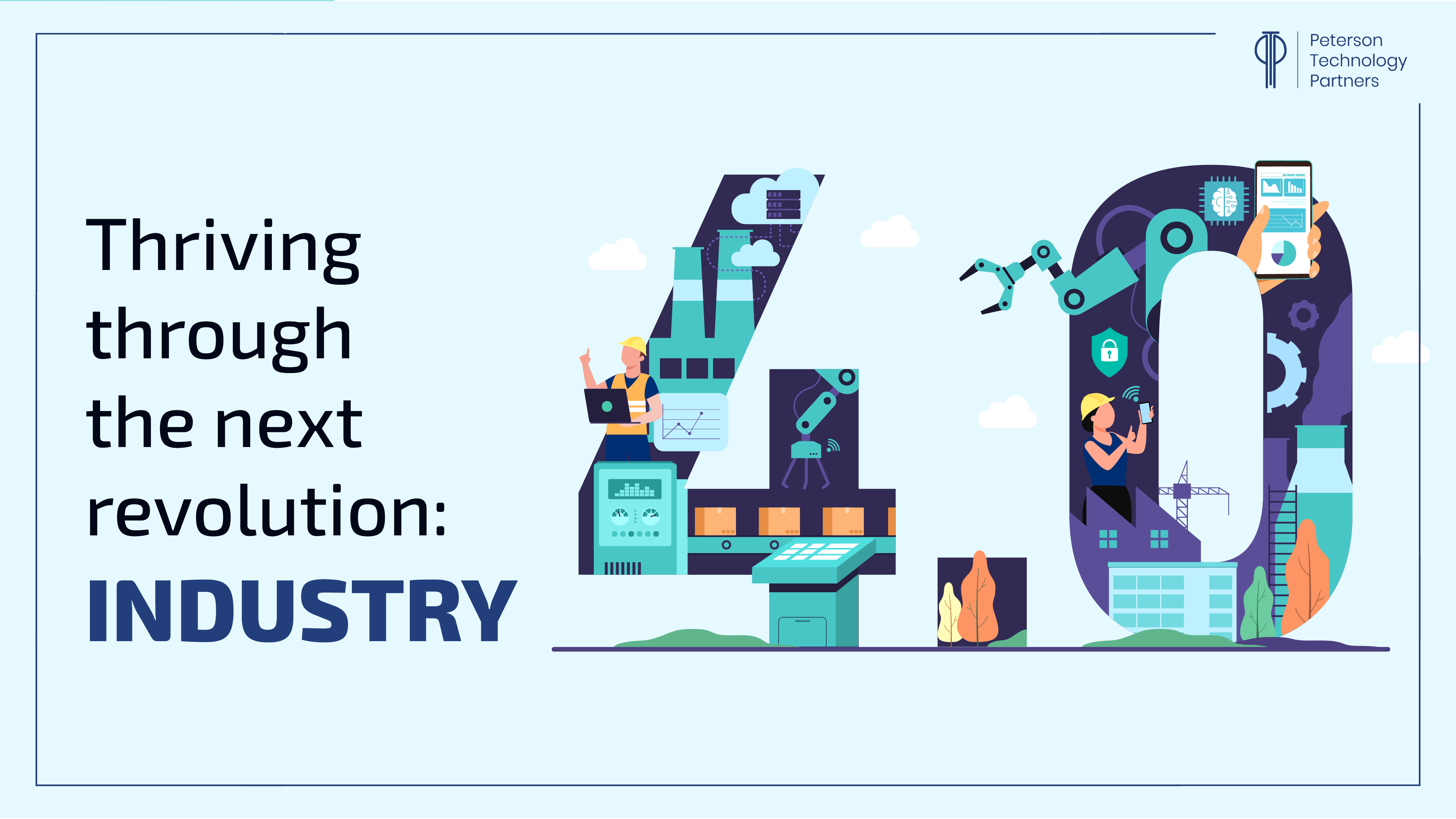It seems easy to overstate. Another Industrial Revolution. Scientists, researchers, economists, and CEOs have been telling us it’s unfolding and it’s different and it’s unlike anything humankind has ever experienced before.
Leaders anticipate the Fourth Industrial Revolution to bring incredibly rapid change to technology and industry during the 21st century because of increasing interconnectivity and automation across most sectors. Popularized in 2015 by Klaus Schwab, the World Economic Forum Founder and Executive Chairman, he contends that the impending changes will be more than just improvements to efficiency; they will induce significant shifts across industries and markets. A significant aspect of these changes will be the intersection of technologies such as artificial intelligence, gene editing, and advanced robotics. According to Schwab, these capabilities start to blur the lines between the physical, digital, and biological worlds.
But aren’t these just grand proclamations for academics to spout and historians to label? What makes this Fourth Industrial Revolution so…revolutionary? What will this mean for small, medium, and large corporations who all have different stakes in the global market?
Instead of using broad brush strokes, let’s lean into the question of what value there is to be found in Industry 4.0. Today’s article will discuss 4 key sectors and companies already leading the way to capitalize on what 4IR has to offer.
Cloud technology and connectivity
The Internet of Things (IoT) has already brought connectivity to the forefront in a major way, and coupled with computational power, will continue to shape everything from supply chain to production facilities to domestic home life. Impressive progress has been made in AI technology of late because of the exponential increases in computing power, combined with the availability of vast amounts of data, from software used to discover new drugs to algorithms used to predict our cultural interests.
Ten years ago, way back in 2012, Capital One started its journey to build “a technology company that does banking instead of a bank that just uses technology,” as CEO Richard Fairbank stated.
Capital One acquired talented developers and programmers required to build apps and implemented agile software development, including the use of open-source software. The company also embraced cloud technology full force. In 2020, Capital One closed all of its on-site data centers and moved all applications and systems to Amazon Web Services. This cloud-only strategy helped the company get away from infrastructure and hardware management so it could focus on customer service innovation by using machine learning to turn data into insights. Capital One is using the interconnectivity of cutting-edge technology to transform its business services and its client base.
Some examples of technology that will use cloud technology and connectivity throughout the 4IR include:
- Blockchain
- Computational power
- Internet of Things
- Sensors
RELATED: The Tech Trends Defining Work in 2022
Human machine-interaction and machine learning
There’s nothing more irritating than sitting home starving on a Friday night, waiting for your pizza to be delivered, and it never shows up. Or worse yet, it arrives after hours of waiting cold and soggy. One company aimed to change that for its customers. Domino’s launched a multifaceted strategy to revamp its menu and implement technology to increase its agility after its stocks crashed in 2008.
The company launched Domino’s Tracker which allowed customers to follow the progress of their order online, which was revolutionary at the time of its creation. Today, Domino’s AnyWare technology lets customers order in eleven (11!) different ways across devices. Conversely, customers can still place an order through the website, or can still place an order the extremely old-fashioned way: via a phone call.
A combination of artificial intelligence and machine learning technology has improved product quality and online operations. The use of autonomous vehicles and drones for pizza delivery, in addition to AnyWare, has allowed Domino’s to tap into tech-savvy customers who wanted simplicity and ultra-convenience in the way they order their pizzas.
Some examples of technology emerging that will use human-machine interaction and machine learning throughout the 4IR include:
- Virtual and augmented reality
- Robotics and autonomous vehicles
- Chatbots
Analytics and intelligence
An example of a company integrating multiple technologies to transform itself is retail behemoth Walmart. The company’s goal of making shopping faster and easier for customers aims to target rival Amazon in those areas.
Walmart has also forged strategic partnerships to accelerate its digital transformation. It utilized Microsoft’s services to capitalize on its capacity to scale its artificial intelligence, machine learning, and data analytics initiatives. Walmart also partnered with Google for voice-enabled shopping.
Walmart has been consistently and strategically digitizing every aspect of its business, from supply chain sourcing to sales to customer service to marketing in an attempt to boost its cost-efficiency. The company’s goal of serving customers through online, mobile, and in-store interactions is attempting to give rival Amazon a run for their money.
Some examples of technology emerging that will use analytics and intelligence throughout the 4IR include:
- Automation of knowledge work
- Big data
- Advanced analytics
- AI
Suddenly, it’s a little easier to see how all the technological pieces are coming together to create the Fourth Industrial Revolution. Companies that can scale these technologies and use them in conjunction with each other are poised to attain serious value in the long term.
Certainly, scaling up and taking advantage of all the possibilities of the interconnected technology of 4IR isn’t easy. It takes time, significant resources, and major talent- as all dynamic growth does. But if companies take the time to develop a robust strategy and deployment road map, companies can begin their Industry 4.0 integrations and chart a steady course forward for the future.
Are you looking for a job in Information Technology?
See all of our current openings here!
About the Company:
Peterson Technology Partners (PTP) has partnered with some of the biggest Fortune brands to offer excellence of service and best-in-class team building for the last 25 years.
PTP’s diverse and global team of recruiting, consulting, and project development experts specialize in a variety of IT competencies which include:
- Cybersecurity
- DevOps
- Cloud Computing
- Data Science
- AI/ML
- Salesforce Optimization
- VR/AR
Peterson Technology Partners is an equal opportunities employer. As an industry leader in IT consulting and recruitment, specializing in diversity hiring, we aim to help our clients build equitable workplaces.





